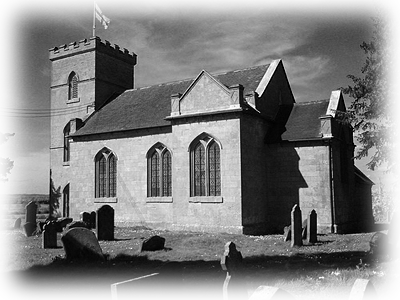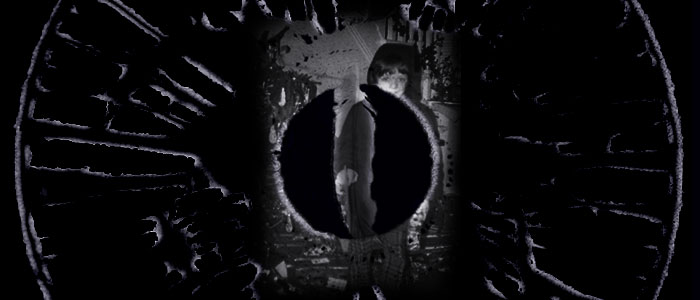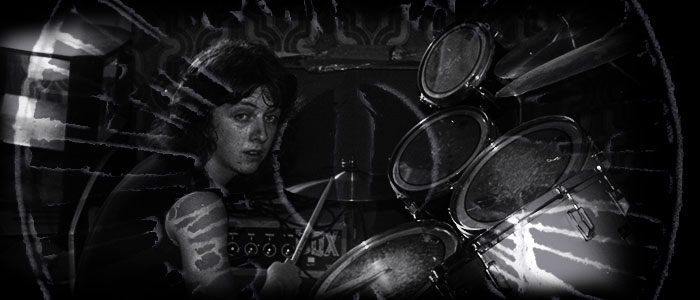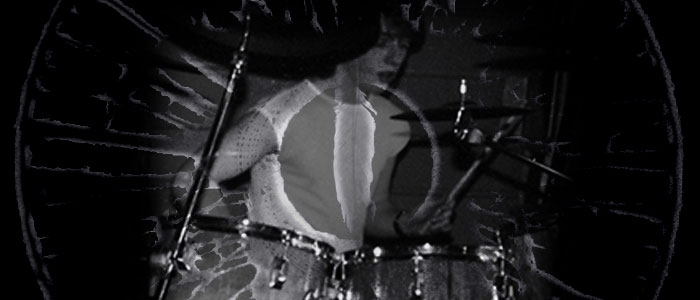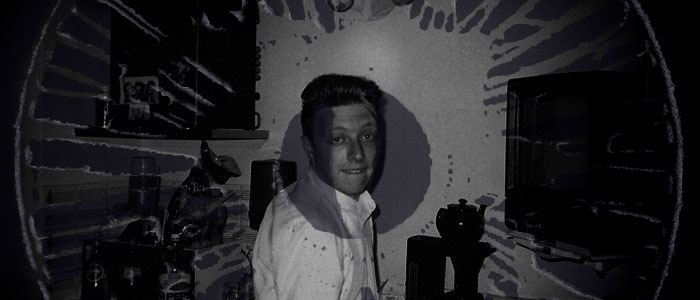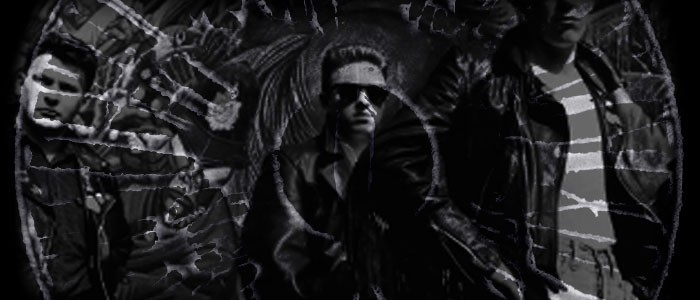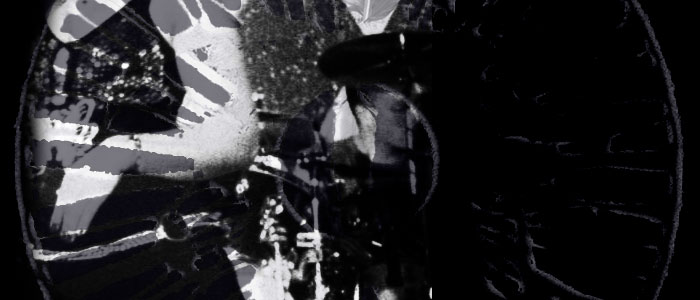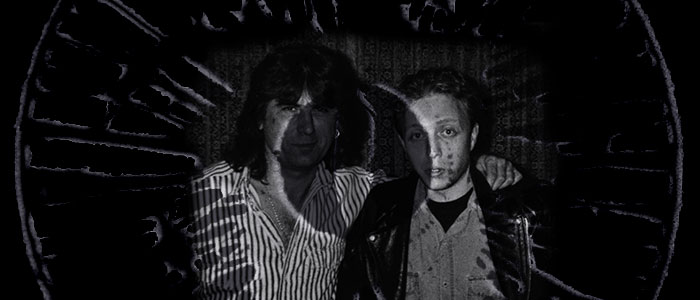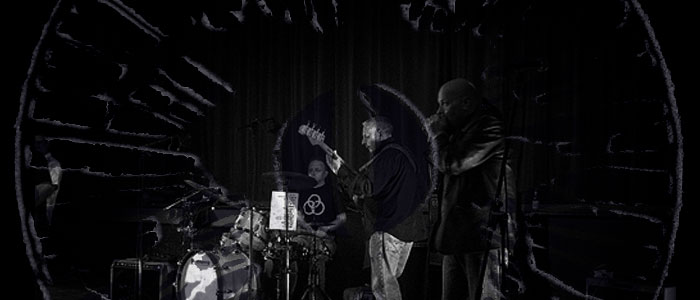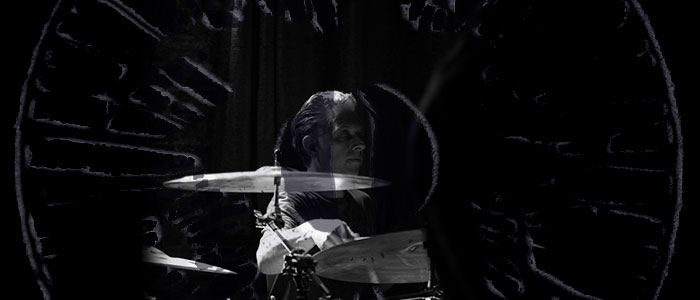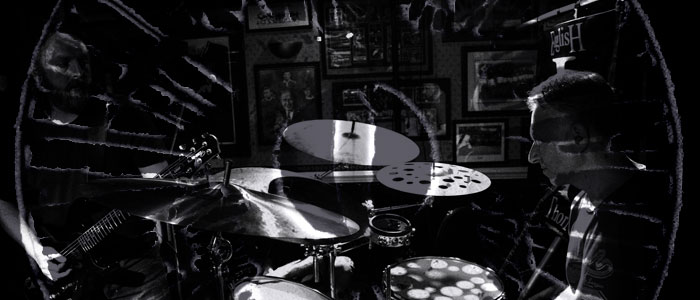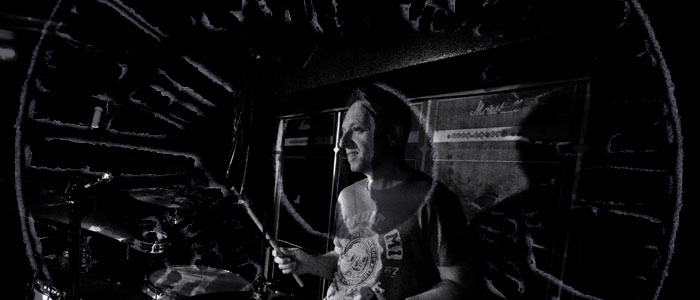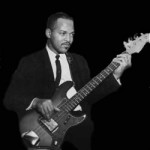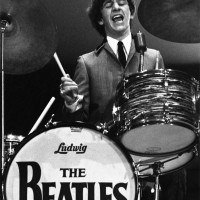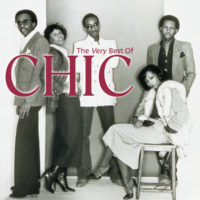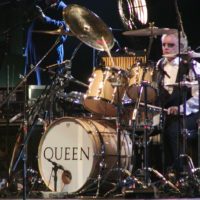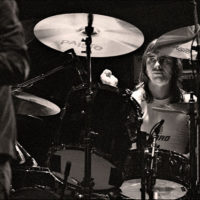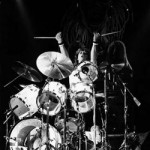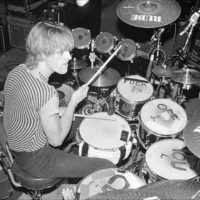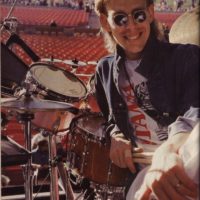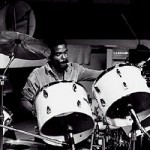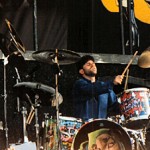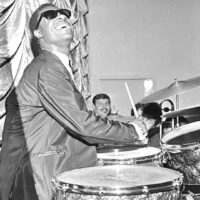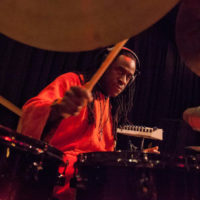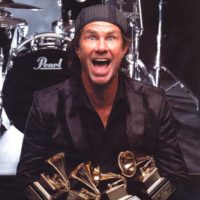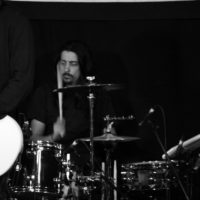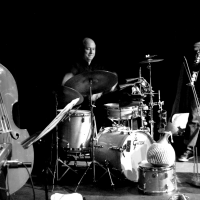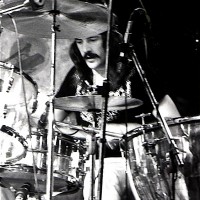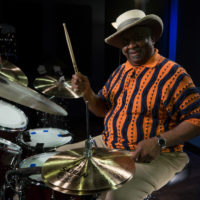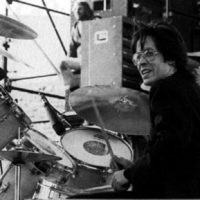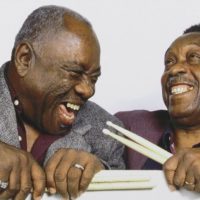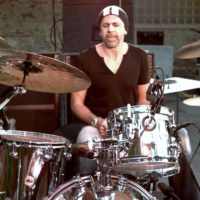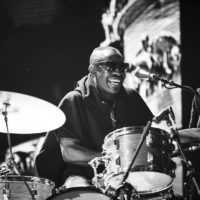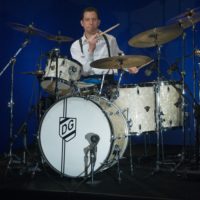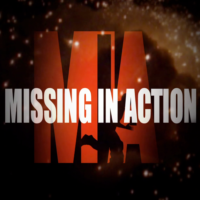There’s not much I can add to what has already been said about John Bonham, the drummer Led Zeppelin could never replace. The following tribute comes not from historical or analytic perspective; but from heartfelt, personal influence.
Whether by witchcraft or more grounded reasons, if you let the music of Led Zeppelin into your life, it stays an absolute forever. The constant known as John Henry Bonham first came into my musical awareness during the late 1970’s, Zeppelin’s literal swan-song period. Early teenage gatherings introduced me to the bands back-catalogue, out of which, I was gifted album number three as a Christmas present one year. In December 1979, the song ‘Fool In The Rain’ lifted from the ‘In Through The Out Door’ album featured heavily on Paul Gambaccini’s Radio 1 American Billboard singles show. Although clueless to the existence of Bernard Purdie at the time, my crude rhythmical radar homed in on the drum pattern Bonham had borrowed from ‘the world’s most recorded drummer’. It would be another ten years and a viewing of Jeff Porcaro’s instructional video before I discovered where the groove came from. Christmas that year brought me their final album and by September the following year, Bonham was dead. “Pop Star Found Dead In Bed” was the front page headline the ‘Daily Star’ provided for me on my way to school the morning the news hit the public. (I haven’t purchased a ‘Daily Star’ since that day, my juvenile buying choice being driven by front-page content over journalistic quality!) By Christmas 1980 Zeppelin were finished, leaving an air of mystique that cloaks their legendary status to this day.
It was sometime during the late 1980’s that I started delving into their remastered CD’s during a period of revisiting nostalgic artists from my youth. Although some of their material remained on my ‘miss’ list, a great proportion found its way further into my subconscious, carrying with it the subliminal pulse of so-called ‘Rock’ drummer, John Bonham. Of course, he was far more than a ‘Rock’ drumming pugilist; even Prince drummer, Michael Bland would go on to describe him as “a funky drummer in a Rock band” during one interview. However, it wasn’t until the mid 1990’s that I would finally fall, irretrievably under the spell of Zeppelin and their one-of-a-kind drummer.
1996 wasn’t a fantastic year for me drumming-wise. My confused focus had been on emulating technique from the stables of Steve Smith, Dennis Chambers and Vinnie Colaiuta; whilst daily bread was earned from a reluctant parody of yesterday’s hero, Stewart Copeland. The ‘Synchronicity’ show was doing reasonably well on the tribute circuit; despite my initial unwillingness to go back in time and reconnect with all things Copelandesque. In the middle of all this confusion, other musical voices began to knock on the door of my unsettled frame of mind, inviting me to explore other pathways…
There was the post-sound-check incident at the legendary JB’s club in Dudley, where my musical senses were drawn to the earthy sounds of debut album ‘Replenish’, by Glastonbury funk-rockers, Reef. The organic 70’s style ambience of the drum sound was a million miles away from what I produced on a nightly basis; but it was the freshest thing I’d heard come out of a drum set, for a long time. A few months later I reconnected with the music of Led Zeppelin once again, during a two week excursion to the Lake District. The outbound journey had seen the airing of an old compilation tape made up of tracks culled from ‘Physical Graffiti’ and ‘In Through The Out Door’. The same tape would accompany me on my solitary drive back home mid-holiday, to fulfil a badly timed gig obligation. Over miles of breathtaking scenery, it was just me, Zeppelin and the pulse of Bonham on a magical early summers evening. 48 hours later, the familiar cassette continued to unwind its deep, subliminal secrets into my subconscious on the drive back up to Cumbria. Although I didn’t know it at the time, the foundations for my next drumming metamorphosis had been laid from within the cockpit of a Rover 216.
At this part of the decade I was playing my dream drum kit, a Sonorlite Scandinavian Birch set I’d fallen in love with during the mid 1980’s. It looked beautiful, sounded clean and modern; everything I aspired to, though definitely not the right choice for a Police tribute band or a future disciple of Bonham. I believe it was during a visit to the market town of Keswick whilst on the aforementioned holiday, that my ears were drawn to the distant music of a marching band. Although their cadence was descending from ear-shot, the unmistakable sound of two, large, taut Bass drum skins, resonating together in the open air, carried on the breeze. This was the sound of John Bonham; and I wanted it. Despite experimentation, replication could not be coaxed from my modern drums and by 1999; I had (somewhat naively) entered the vintage drum set market.
As for Bonham’s playing, there is little point in going over what has been already been written about a God within his genre. However, I do take issue with musicians and non-musicians alike, who mistakenly perceive him as the ‘ultimate Rock drummer’. This is a lazily adopted misnomer made by people who have only ever consumed one style of music, that being, of the ‘Rock’ variety. If they bothered to expand their musical palettes (as Bonham himself did), then it would become clear that the man had a vast array of influences to draw inspiration from. If he had possessed nothing more than the limited dexterity of a one-dimensional ‘Rock’ drummer, then how was it possible for him to absorb and reinterpret the work of Bernard Purdie or Max Roach? This man was anything but a ‘Rock’ drummer and anyone believing otherwise needs a serious rethink about their observations. Sure, he could lay it down heavy; but ‘heavy’ could only exist as ‘heavy’ by virtue of the fact he was also able to inhabit the opposite end of the dynamic spectrum, seemingly without any difficulty. Try and ask a ‘Rock’ drummer to play quietly or subtly; there’s more chance of finding cheese on the moon…
The bottom line is; John Bonham was a groover with a funky soul and an irreplaceable part of the Led Zeppelin story. John Paul Jones willingly reiterates that his association with Bonham has yet to be surpassed in any of the rhythm sections he’s inhabited, before or after Zeppelin. It was touching to see Jason Bonham take his dad’s drum seat, just for one night, on the 2007 reunion gig; though I do reluctantly take Robert Plant’s standpoint that the event signified the final curtain, the last piece of the Zeppelin tapestry to be woven. Not being lucky in the ticket lottery for that momentous gig, part of me still wishes for a repeat performance, just one more show; that is until, I remember my visit to a peaceful churchyard in Rushock, and realise that maybe it is best to let the memory of the three circles lie, undisturbed.
